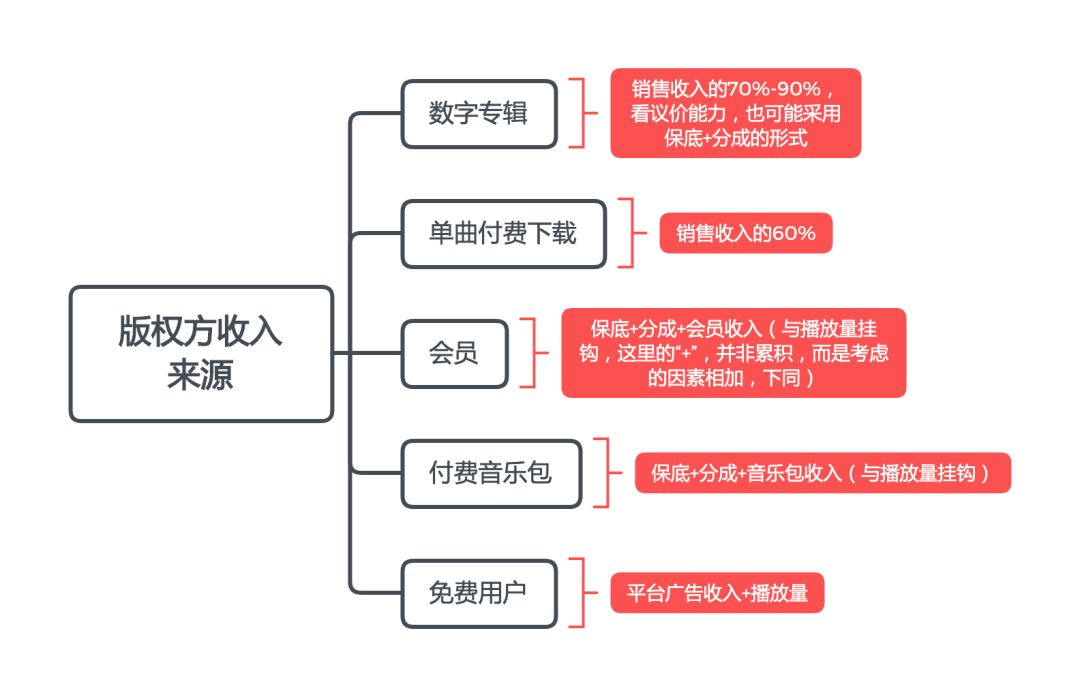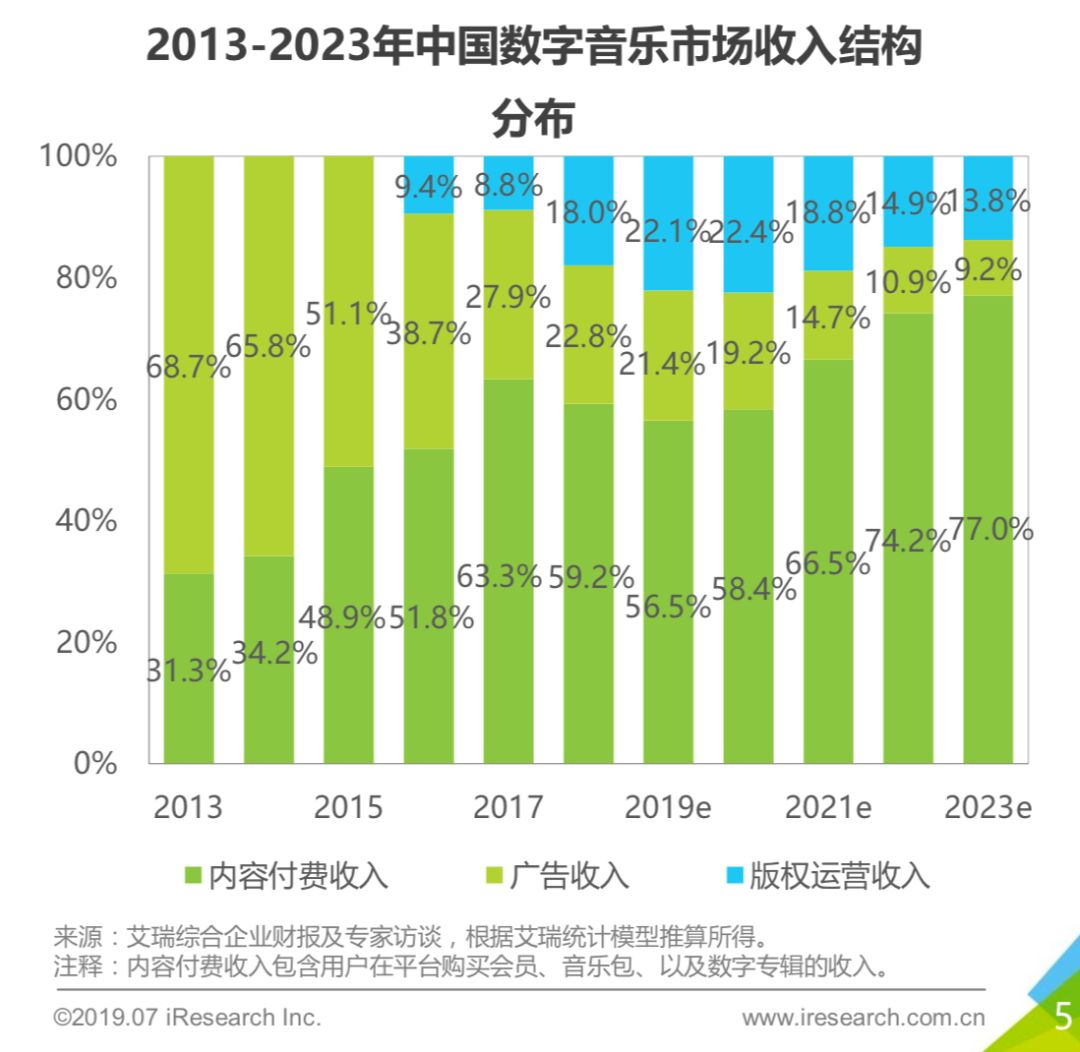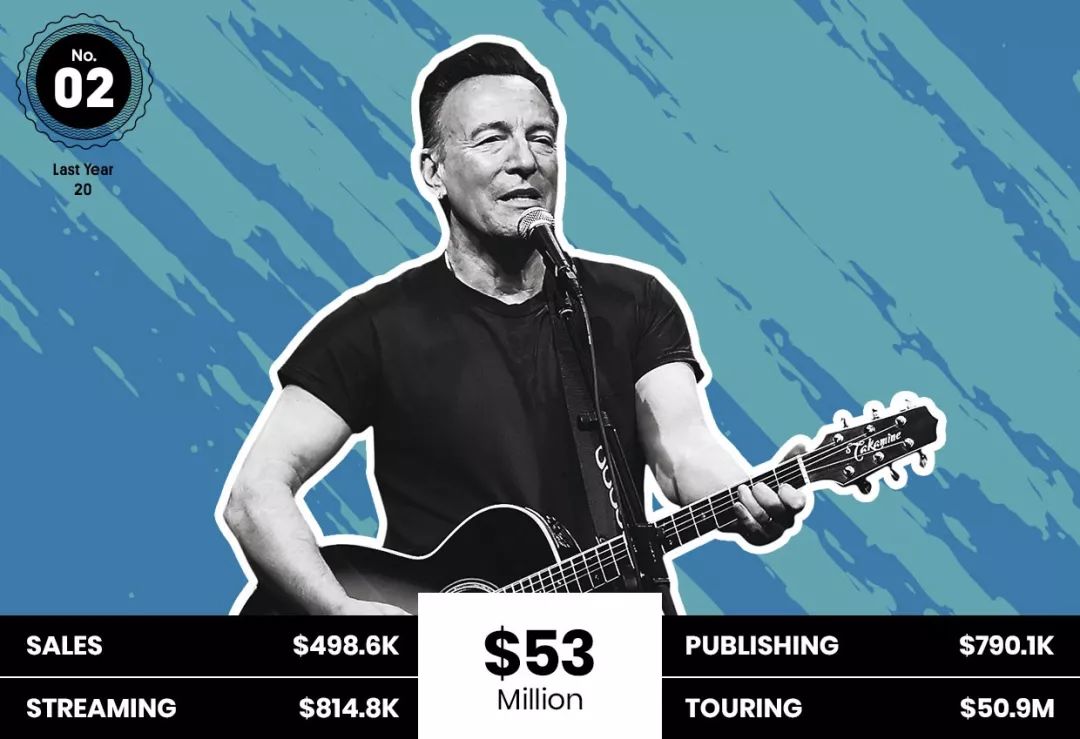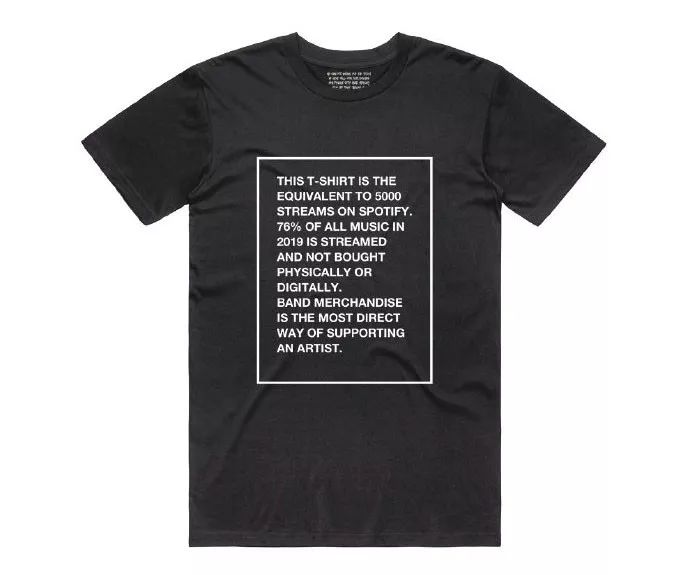Don’t put your eggs in one basket.
Editor’s note: This article is from the micro-channel public number “ new music industry observers ” (ID :takoff), the author of the new Aberdeen deity.
There are a lot of discussions on the Internet recently around the “Digital Album”. There sing good, there are bad-mouthing (like me).
Either sing or sing, as long as there is discussion, it is a good thing, indicating that everyone is paying attention to this aspect – behind the discussion of “digital album”, the focus is actually on the payment model of Internet music, and, discussion It’s not about paying, but how to pay for it better.
In the process of onlookers, I found that everyone’s payment model for Chinese Internet music and the source of income for musicians are still vague.
What do we usually mean by “paid” refers to “digital albums”? The album does not pay for it as a “digital album”. Does the musician have no income? What is the contribution of paid members to musicians? Can free users really not bring income to musicians? In the era of streaming media, how can we better support the musicians we like?
This article tries to help you clarify these issues.
On the Internet music platform, what do we usually mean by “paid” refers to “digital albums”?
No.
The payment method of China’s Internet music platform is not just a “digital album”, users have a variety of ways to pay.
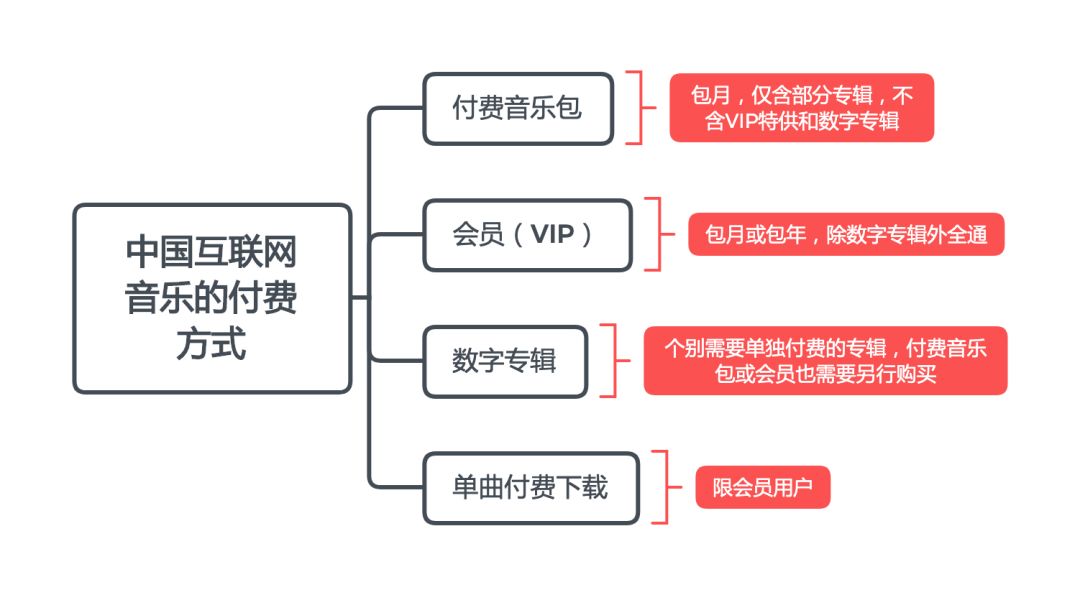
Buy or buy a “digital album” andIt is not a “paid” standard. Each of the above methods is “paid”. It is considered to be spent on music. I don’t think there is any difference between high and low.
However, the “Digital Album” and “Single Download” are more of the core audience for artists, “music packs” and members are more suitable for the audience.
The album does not pay for the “digital album”. Does the musician have no income?
No.
The copyright party will receive a royalty fee regardless of whether the user pays for the purchase of a “digital album.” The playback amount of free users, music packages and member users is counted in the copyright usage fee of the copyright party.
Description The copyright party with weak bargaining power may not have a guarantee. The copyright party here refers to the distribution problem between the record company, copyright agent or musician, company and artist, and is beyond the scope of this article.
The revenues obtained by the copyright party from the single pay-per-download and the “digital album” may be relatively high, because the two pieces of income are usually divided into a proportional way to see the bargaining power, and some will have a guarantee, but The income ratio is relatively fixed.
For example, if the digital album platform is 30%, the single paid download platform is 40%. Then, the copyright party has 70% or 60% of the credit.
The music package is not the same as the member. It involves the calculation of the income of the paying user and the amount of the broadcast, so it is not fixed. The membership of the platform and the music package are high, the playback volume of the work is high, and the copyright party’s income will be higher. On the contrary, it will be lower.
The copyright owner with strong bargaining power will also have guaranteed income in this section. But in general, it is definitely a fixed ratio that is more secure.
In terms of revenue, this is theoretically the case: Digital Albums>Single Downloads>Members>Music Packs>Advertising and Playback Revenue from Free Users< /p>
The problem is, digital albums and singles downloads all depend on the appeal of the artist or the work, the head artist with high traffic, the number of digital albums that can be sold, and the popular songs. The amount of paid downloads will be larger.
I have already posted the post to everyone. The income of the “Digital Album” is basically concentrated on a very small number of traffic artists, and the overall income is small. (See: Jay digital albums sold so well, why do I still not optimistic about this model? )
There is no data support for single-play paid downloads. However, in the current trend of streaming media, single-play paid downloads are not mainstream. It is conceivable that revenues will not be high, and they are concentrated in a few works.
Not important, This article is not about discussing the pros and cons of the model, but about giving everyone a path. If you want to better support your favorite musicians, what is the best choice.
From the above, we can already see that even the free user’s play will also bring income to the copyright party, but this income is lower.
How low is it? The data of iResearch can be used as a reference.
In 2018, in the revenue structure of China’s digital music market, advertising revenue (directly related to free users) accounted for 22.8%, and IResearch expects to reduce significantly in the next five years, while content paid revenue accounted for 59.2%.
This ratio is even more extreme in Spotify, with 90% of paid revenue and 10% of advertising revenue from free users.
In other words, the income of the copyright party, mainly at home and abroad, depends mainly on paid income.
So, if you want to better support your favorite musicians, pay first, whether it’s a music pack, a member, or a paid download of a single or a digital album.
Second, of course, consider the results.
From the analysis above, we can see that the “digital album” and “single song paid download”, the copyright party’s income is more secure. (provided that there is indeed income)
And, please note that the digital album is still a singleIn the paid download mode, in addition to the digital album and download revenue, the copyright party will also receive the playback revenue from members, music packages and free users.
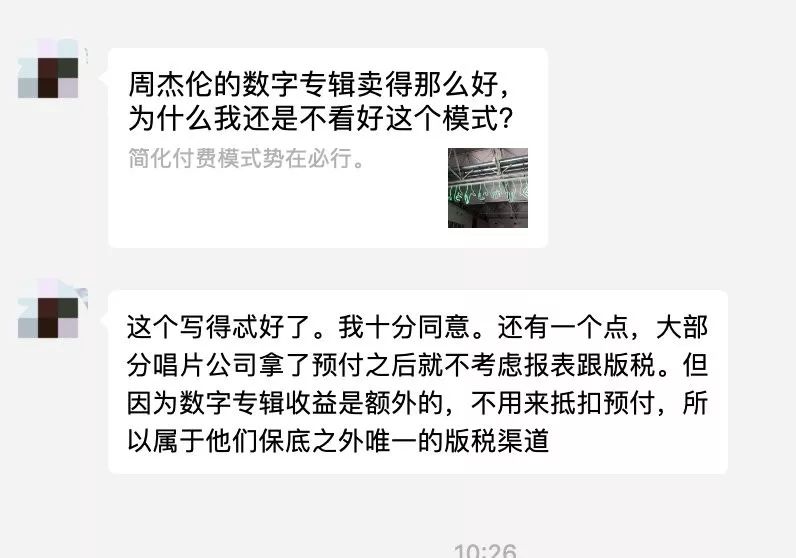
Message from an industry friend
So, for the copyright party, selling digital albums is the best option.
Just, not everyone’s “numbers” can be sold, so, so far, there are not many artists who choose to sell “numbers”, Most artists rely mainly on membership, music packages and free users to generate revenue.
Playback revenue is streaming media revenue.
Global music has entered the era of streaming media. In 2018, global streaming media revenue increased by 2.07 times compared with 2015, accounting for 46.6% of global music revenue, nearly double the revenue of physical records.
In China, the advantages of streaming media are more obvious.
The International Federation of the Phonographic Industry Association’s IFPI report stated that China is the world’s highest audio streaming media penetration rate, reaching 89%. In 2018, China’s streaming media revenue contributed 93.5% of the total revenue of the recorded music market. (See: China The typical example of IFPI report, this time is for 啥?)
The sales revenue of digital albums and single-play paid downloads are not revenue from streaming media and are sales revenue.
If the musicians you support don’t sell “numbers”, then most preferred is the single pay download (each song has), followed by the member, and then the music pack. Listening to more songs is right.
In the case where the artist does not sell “numbers” :Single paid downloads>Member income>Music package income>Free user-generated advertising and playback revenue
Because many listeners have no habit of downloading now, they are basically listening online. In this case, member income> music package income>free user-generated ads and Playload revenue
Say, people are not as good as the platform.
At present, the pure play volume income calculation formula for major music platforms in China is usually:
Number of plays × (1 – Channel cost ratio) × Copyright share ratio × Authorized work usage ratio
(This formula doesn’t take into account variables such as ads and payments)
The word “proportion” is more subtle.
In short, the final calculation, unless the production volume is high, or the income is really minimal.
I recently heard that a company’s 1000 songs received only 10,000 yuan from the platform, and the average song was only 10 yuan per song.
This situation is not unique in China. For the problem of low income from streaming media, foreign musicians are also complaining.
Not long ago, a musician and entrepreneur named Tonyvan Veen made his own music streaming income on the Internet: Spotify, the thousand-play revenue is $4.4, and the lowest YouTube free user is only 0.6. Dollar.
Based on this result, the old man suggested that newcomers or independent musicians with relatively low volume should not put their eggs in a basket of streaming media, and need to develop media, tour, peripheral and physical records.
The same is true for famous singers.
The above picture is from 2018 of Billboard’s statistics.People classified income (US market), “rock emperor” Bruce Springsteen (Bruce Springsteen) Although the total income in 2018 ranked second with $ 53 million, streaming media revenue is only 814,800 US dollars. The vast majority of income comes from touring.
In fact, because streaming media revenues are relatively low, physical record and paid download revenues are still declining, so in recent years, more and more artists have put more energy on the tour.
In addition, it is also a major trend to strengthen the development of physical record products and peripheral products.
Of course, there are shoes selling and selling makeup.
Under the conditions, the development of the entire product line has become an important strategy for artists to broaden their income sources.
So…
As a loyal listener, if you want to better support your favorite musicians , in addition to paying for songs on the music platform, you should also be able to buy physical records, buy tickets to watch shows, buy around, etc. .
Especially for independent business artists, the income of entities, performances and surroundings is more direct and practical than the income of digital music.
Pictured above is the British rock band While She Sleeps launches an “anti-media” official T-shirt that reads:
Buying this T-shirt is equivalent to 5000 plays on Spotify. In 2019, 76% of the music on the streaming media was played, but there is no physical and digital sales. Buying the band’s peripheral products is the most direct way to support artists.
In short, it is to let your favorite musicians have a variety of income sources, so that they not only pin their hopes on streaming media.
